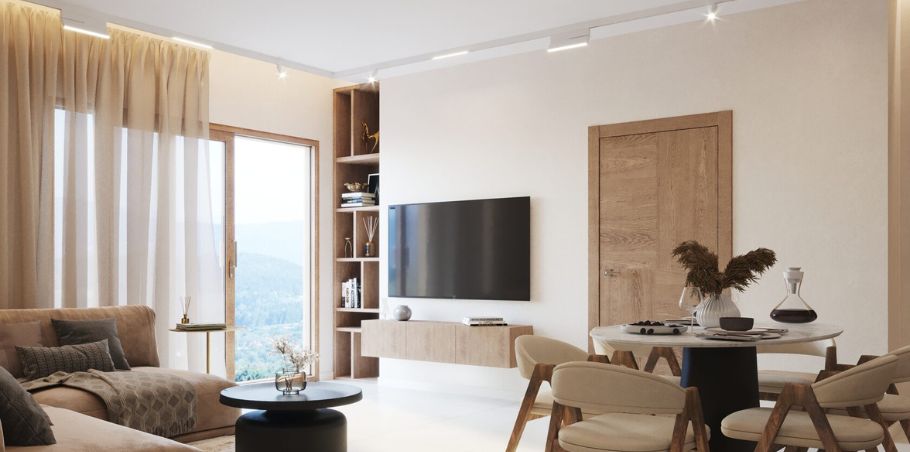The Ultimate Guide to Stone Coated Metal Roofing: Benefits, Installation, and Costs
When it comes to choosing a roofing material that offers a blend of durability, aesthetic appeal, and long-term value, stone coated metal roofing stands out as a top contender. But what exactly is stone coated metal roofing, and why is it becoming a popular choice for homeowners and builders alike?
Stone coated metal roofing is a type of roofing material that combines the strength and longevity of metal with the classic look of traditional roofing materials like asphalt shingles or clay tiles. The metal core is coated with a layer of stone chips that are bonded to the metal, giving it a natural, textured appearance while providing enhanced protection against the elements.
In this article, we’ll dive deep into everything you need to know about stone coated metal roofing—from its benefits and installation process to cost considerations and maintenance tips. Whether you’re considering a new roof for your home or looking to upgrade your current one, this comprehensive guide will help you make an informed decision.
History of Stone Coated Metal Roofing
Stone coated metal roofing has an interesting history that dates back to the World War II era. It was first developed in Europe when metal roofs were coated with tar and stone chips to protect against the harsh weather conditions and extend the life of the metal. This innovative approach quickly gained traction and eventually evolved into the modern stone coated metal roofing systems we see today. Over the decades, the technology behind stone coated metal roofing has advanced significantly. Modern manufacturing processes have improved the durability and appearance of these roofs, making them a popular choice for both residential and commercial applications. Today, stone coated metal roofing is known for its ability to mimic the look of more traditional materials while offering superior performance.
Key Benefits of Stone Coated Metal Roofing
Stone coated metal roofing offers a range of benefits that make it an attractive option for homeowners and builders alike. Here’s a closer look at some of the key advantages:
Durability and Longevity
One of the most significant advantages of stone coated metal roofing is its durability. These roofs can withstand harsh weather conditions, including heavy rain, high winds, and even hailstorms. Unlike traditional roofing materials that may crack, warp, or deteriorate over time, stone coated metal roofing is built to last—often for 50 years or more.
Aesthetic Appeal
Stone coated metal roofing offers a wide range of styles and colors to suit any architectural design. Whether you prefer the look of wood shakes, clay tiles, or traditional shingles, there’s a stone coated metal option that can replicate that appearance while providing the added benefits of metal roofing.
Weather Resistance
Thanks to its robust construction, stone coated metal roofing provides excellent protection against the elements. The stone coating helps to absorb impacts from hail, while the metal core resists corrosion and rust. Additionally, these roofs are designed to withstand extreme temperatures, making them suitable for various climates.
Eco-Friendliness
For those looking to make environmentally conscious choices, stone coated metal roofing is an excellent option. The metal used in these roofs is often made from recycled materials, and at the end of its life, the roof itself is fully recyclable. This helps reduce waste and conserve natural resources.
Energy Efficiency
Stone coated metal roofing can also contribute to lower energy bills. The reflective properties of the metal help to reduce heat absorption, keeping your home cooler in the summer and reducing the need for air conditioning. This energy efficiency can lead to significant savings over the life of the roof.
Types of Stone Coated Metal Roofing
Stone coated metal roofing comes in various styles, each designed to mimic the look of traditional roofing materials while offering the durability and performance of metal. Here’s a breakdown of the most popular types:
Shake Style: Shake style stone coated metal roofing mimics the rustic appearance of wooden shakes. This style is ideal for homes with a traditional or rustic design, offering the charm of wood without the maintenance issues.
Tile Style: Tile style stone coated metal roofing replicates the look of classic clay or concrete tiles. This style is popular in Mediterranean and Spanish-style homes, providing a timeless look with the added benefits of metal’s durability and weather resistance.
Shingle Style: Shingle style stone coated metal roofing offers a traditional look similar to asphalt shingles but with the added strength and longevity of metal. This style is versatile and can complement a variety of home designs.
Barrel Vault Style: Barrel vault stone coated metal roofing is designed to mimic the rounded, barrel-shaped tiles often seen in historic architecture. This style adds a touch of elegance to any home and is particularly well-suited for luxurious or classical designs.
Materials Used in Stone Coated Metal Roofing
The core of stone coated metal roofing is typically made from steel or aluminum, both of which offer excellent strength and resistance to rust and corrosion. Steel is often galvanized or coated with an aluminum-zinc alloy to further enhance its durability. The stone coating applied to the metal core is made from natural stone chips that are bonded to the metal using a durable adhesive. This coating not only provides an attractive finish but also adds an extra layer of protection against the elements.
Comparing Stone Coated Metal Roofing to Traditional Roofing
While asphalt shingles are a common roofing choice due to their affordability, they don’t offer the same level of durability or longevity as stone coated metal roofing. Asphalt shingles typically last 20-30 years, whereas stone coated metal can last 50 years or more. Clay tiles offer a distinctive look and are known for their durability. However, they are heavy and can be prone to cracking in severe weather. Stone coated metal roofing can replicate the appearance of clay tiles without the weight or fragility.
Wooden Shakes
Wooden shakes have a natural, rustic appeal but require regular maintenance and are susceptible to rot and insect damage. Stone coated metal roofing offers the same aesthetic with significantly less upkeep. Standing seam metal roofing is another popular metal roofing option known for its sleek, modern appearance. However, it lacks the textured finish provided by stone coating, which can make stone coated metal roofing a better choice for those seeking a more traditional look.
Installation Process
Before installing stone coated metal roofing, the existing roof must be inspected and any necessary repairs made. This ensures a solid foundation for the new roofing material.
Step-by-Step Installation Guide
- Measure and Cut Panels: Panels are measured and cut to fit the roof’s dimensions, ensuring a precise fit.
- Install Underlayment: A waterproof underlayment is installed to provide an additional layer of protection against moisture.
- Lay Down Starter Strips: Starter strips are placed along the edges of the roof to anchor the first row of panels.
- Install Panels: The stone coated metal panels are then installed, starting at the bottom and working upwards.
- Secure Fasteners: Panels are secured with specialized fasteners designed to prevent water infiltration.
- Seal Seams and Edges: Seams and edges are sealed to ensure a watertight finish.
- Install Ridge Caps: Ridge caps are placed at the roof’s peak to provide a finished look and additional protection against the elements.
Common Mistakes to Avoid
- Improper Fastening: Ensure that fasteners are securely installed to prevent water leaks.
- Overlooking Seams: Seams must be properly sealed to avoid moisture penetration.
- Skipping the Underlayment: Skipping the underlayment can lead to moisture issues and reduce the roof’s lifespan.
Cost Analysis
Stone coated metal roofing tends to have a higher upfront cost compared to traditional roofing materials. However, this cost is often offset by the roof’s longevity and minimal maintenance requirements. While the initial investment may be higher, stone coated metal roofing can save homeowners money in the long run due to its durability, energy efficiency, and low maintenance needs.
Factors Affecting Pricing
- Roof Size: Larger roofs will naturally require more materials and labor, increasing the overall cost.
- Complexity of Design: Roofs with complex designs or multiple slopes may require additional time and materials.
- Location: Labor costs can vary depending on the region, impacting the total installation price.
Maintenance Tips for Stone Coated Metal Roofing
Regularly inspect your stone coated metal roof for any signs of damage, such as loose panels or missing stone chips. Early detection of issues can prevent costly repairs down the line. Keep your roof clean by removing debris such as leaves, branches, and dirt. This prevents buildup that can trap moisture and lead to rust or other damage. If you notice any minor issues, such as a loose panel or a small area of damage, address them promptly to prevent further deterioration.
Common Myths and Misconceptions
A common misconception is that metal roofs are noisy during rain. However, stone coated metal roofing is designed with multiple layers that help dampen sound, making it no noisier than other roofing materials. Some believe that metal roofs are easily damaged by hail. In reality, stone coated metal roofing is highly resistant to impact and can withstand hailstorms without significant damage. Despite being made of metal, stone coated metal roofing is surprisingly lightweight. It’s often lighter than traditional roofing materials like clay tiles, reducing the need for additional structural support.
Environmental Impact
Stone coated metal roofing is made from materials that are often recycled and fully recyclable at the end of its life, making it an eco-friendly choice. The reflective properties of metal help reduce heat absorption, which can lower cooling costs and contribute to overall energy efficiency. Due to its longevity, stone coated metal roofing generates less waste over time compared to traditional roofing materials that may need to be replaced more frequently.
How to Choose the Right Stone Coated Metal Roofing for Your Home
Consider the style and architecture of your home when selecting a stone coated metal roofing style. Choose a design that complements the overall look of your property. The climate in your area can also influence your choice. For example, if you live in a region with heavy snowfall, you may want to select a style that sheds snow easily. While stone coated metal roofing is an investment, it’s essential to choose a product that fits your budget without compromising on quality.
Warranty and Longevity
Most stone coated metal roofing products come with a warranty that can range from 30 to 50 years, covering both the material and installation. To maximize the lifespan of your stone coated metal roof, follow proper installation procedures, perform regular maintenance, and promptly address any issues that arise.
Real Life Examples of Stone Coated Metal Roofing
Many homeowners have successfully installed stone coated metal roofing, enjoying its benefits of durability, aesthetic appeal, and long-term value. These case studies highlight the versatility and performance of stone coated metal roofing in various climates and home styles. Commercial buildings, too, can benefit from stone coated metal roofing. Whether it’s a retail space, office building, or industrial facility, stone coated metal roofing provides a durable and attractive solution that can withstand the demands of commercial use.
FAQs About Stone Coated Metal Roofing
Is stone coated metal roofing noisy during rain?
No, stone coated metal roofing is designed with layers that dampen sound, making it as quiet as other roofing materials.
How does stone coated metal roofing compare to asphalt shingles in cost?
While the initial cost is higher, stone coated metal roofing offers better long-term value due to its durability and low maintenance needs.
Can stone coated metal roofing be installed over existing shingles?
Yes, in many cases, stone coated metal roofing can be installed over existing shingles, reducing installation time and costs.
What is the lifespan of stone coated metal roofing?
Stone coated metal roofing typically lasts 50 years or more, making it one of the most durable roofing options available.
Does stone coated metal roofing require special maintenance?
No, stone coated metal roofing requires minimal maintenance, such as regular inspections and debris removal, to ensure its longevity.
Conclusion
Stone coated metal roofing offers an excellent combination of durability, aesthetic appeal, and energy efficiency, making it a top choice for homeowners and businesses alike. With its wide range of styles and long-lasting performance, it’s no wonder that this roofing material is gaining popularity. If you’re considering a new roof, stone coated metal roofing is certainly worth the investment.
If you gained new insights from this article, explore our blog, Gimkit, for more enlightening content.
Share this content:












Post Comment